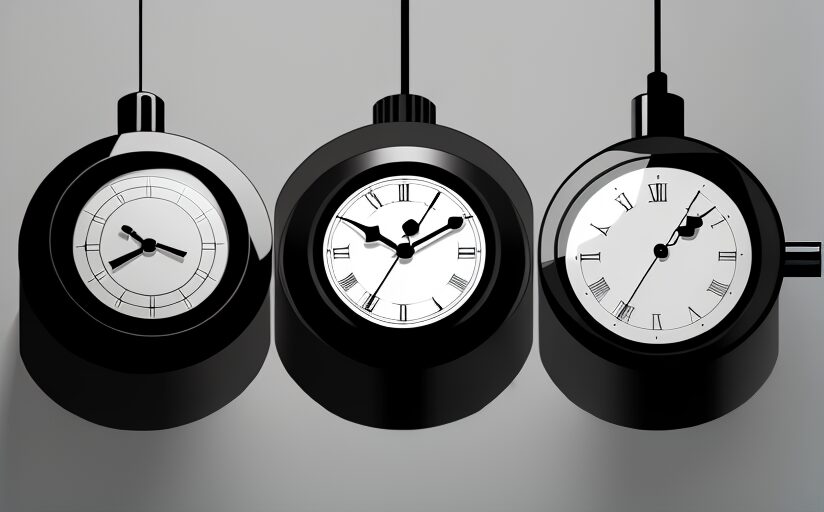When writing SEO content using AP Stylebook guidelines, understanding how to report AP style time and dates can be critical to conveying accurate and complete information to readers. The following guide can help you more fully understand some of the more complicated rules.
(If you make a purchase using the links in this post, we may earn a commission.)
A.D.
A.D. is used when referring to anno Domini or the year of the Lord. Using A.D. to represent the time is acceptable in all references. The full term with year would not read in the year of the Lord 99 as it’s not common and may not be understood by many people. Instead, use A.D. 99.
Do not use the eighth century A.D because it is repetitive. Stating the eighth century is appropriate. Time is presumed to be A.D. if not specified otherwise.
B.C.
B.C. should be used when referring to the time period before Christ.
The full reference would be in the year 99 before Christ, but the acceptable abbreviation is B.C., which is placed after the year: 99 B.C.

Century, Centuries
Unless used when referring to a proper name, use century in lowercase.
Spell numbers out if under 10: the second century, the 35th century.
When using lowercase to report centuries, spell out any numbers from zero to nine: seventh century.
When reporting proper names, adhere to the organization’s treatment: 21st Century Fox
Figures from 10 and over should be written as numbers: 43rd century.
Dates, Decades and Years
Dates are reported using Arabic figures. Do not use nd, rd, st or th.
Proper usage: Jan. 6, 2008, Class of ’88, the 1990s.
Refer to the terrorist attack on Sept. 11, 2001, as 9/11.
Use a comma after the year when referring to month, date and year in a story.
Days of the Week
Capitalize the days of the week and refer to the full name of the day in your stories: Monday, Wednesday, etc.
Exception: When using a tabular format, it is acceptable to refer to three-letter abbreviations for the days of the week: Sun, Mon, Tue, Wed, Thu, Fri and Sat. Do not use periods after abbreviations in tabs.
BUY – The Associated Press Stylebook: 2024-2026
Historical Periods and Events
Widely recognized names of epochs in geology, anthropology, history and archaeology should be capitalized: the Dark Ages, the Pliocene Epoch, the Bronze Age.
Popular names for events or periods that are widely recognized should also be capitalized: the Boston Tea Party, the Great Depression, the Atomic Age, the Civil War.
When referring to a century, use lowercase: the 20th century.
Capitalize the adjectives or proper nouns in period general descriptions: classical Rome, the fall of Rome, ancient Greece, the Victorian era.
If the information about the period or event is not listed, use Webster’s New World College Dictionary capitalization examples. Use lowercase entries if the dictionary lists the format as acceptable.
Months
All uses of the names of months should be capitalized. If your story or article uses a specific date, spell out the month when used alone or with a year. When designating the months Jan., Feb., Aug., Sept., Oct., Nov. and Dec., an abbreviation is acceptable.
If reporting a month and year, do not use a comma to separate the year.
When the reference is a month, day and year, use commas after the year in the sentence.
Month references in tabular form should use three-letter abbreviations. Do not use a period: Jan, Feb, Mar, Apr, May, Jun, Jul, Aug, Sep, Oct, Nov, Dec.
Examples:
- June 2018 was a hot month.
- Aug. 8 was the hottest day of the year.
- Rick’s birthday is April 7.
- The sergeant listed Jan. 12, 2011, as the target date.
- The judge ordered depositions for Tuesday, Oct. 5, right after lunch.
Time Element
When writing news stories, do not use tonight or today. Refer to the day of the week.
Write out Monday, Tuesday, Wednesday, etc., when referring to the days that are within seven days of the current date, either before or after.
When appropriate, use the month with a figure. See the section for “Months” above.
Prevent redundancies in reporting such as last Monday or next Monday. The tense surrounding the verb, such as the present, past or future, will generally indicate which Monday the story is referring to: Her job ended Monday evening. Jake will order pizza on Tuesday.
Awkward time element placements should be avoided, especially when suggesting a day of the week as the object of a transitive verb: The court arrested Wednesday.
Rephrasing, using on or moving the time element can be used as potential remedies to correct the phrase.

Time of Day
Most stories don’t require an exact time of day to express when an event will happen or has happened. However, there are occasions when a time of day should be reported specifically and in a particular format.
Specifying Time
Specify the time when it offers the reader a clear picture of the scene. For example, were people at home when the earthquake occurred, or were they at work? Although reporting a clock reading in each datelined community may add information, it is more illustrative to use descriptors such as rush hour traffic or pre-dawn hours.
If time is a critical element in the story, specify the moment. For example, what time will the moon set? When will the president address the nation? What is the kidnapper’s deadline?
Using Clock Time
When reporting a clock reading in a datelined community, use the time in that area.
If there is no dateline in the story, report the clock time where the event took place or will occur.
Exception: When using a tabular listing or reporting a nationwide story involving radio or television programs, specify when the program will be broadcast using Eastern time. Follow the noted time with EST or EDT and specify the clock time in a separate paragraph when the program will be aired in the different time zones if it is practical to do so. If the nationwide program will be simultaneously broadcast across time zones, note that as well.
Abbreviating Zones
Only use the zone abbreviation of EST, EDT or PST after a specific clock time if:
- The story refers to specific times involving travel or other activities affecting people in more than a single time zone. Examples may include a televised speech or a court building’s closing hours.
- The item reported involves radio or television programs.
- The advisory item is meant for editors.
- There is no dateline on the item.
Converting Time
Report the actual time zone within the continental United States in your story rather than converting clock times to Eastern time. If a high interest is expected from different areas, add PST, CDT, etc., so readers can determine the equivalent of their local time.
If the story is from outside the United States and time is critical to your narrative, provide an Eastern time zone conversion following this format: The plane reportedly crashed at 8 a.m. (2 a.m. EDT) yesterday.
Time Zones
When writing stories reporting about a particular time zone, capitalize the full name: Central Standard Time, Eastern Standard Time, Eastern Daylight Time, etc.
Stories written in short form should use lowercase time zone designations, except for the region: Mountain time, Eastern time zone, etc.
If there is no clock time reported, spell time zone out: San Francisco is in the Pacific time zone.
When stories refer to time zones within Mexico, Canada or the United States, it is acceptable to use the abbreviations of EST, CDT, etc., on the first reference when a clock reading is linked: 10 a.m. PST, noon CDT. (No commas are used to set off the abbreviations.)
Spell out time zone references that are not within the contiguous United States: If the rocket blast occurred at noon EDT, it would have taken place at 1 p.m. Atlantic Standard Time, and the Alaskan people would have witnessed the event at 8 a.m. Alaska Standard Time.
GMT
Universal Time, or Greenwich Mean Time, is an exception to the AP guide’s spelled-out format. It is acceptable to add the abbreviation of GMT if a clock reading is used on the second reference.
The time kept by the atomic clock can also be referred to as Universal Time Coordinated, or UTC.
???? BUY – AP Stylebook, 57th Edition Ebook
Today, Tonight
Use the day of the week instead of using tonight or today in your news stories. The only exception is when referring to general phrases with no specific day or within direct quotations: Customs seen as acceptable today are much different than those from a century ago.
It is acceptable in some writing narrative types to use this morning, tonight, today and this afternoon when referring to the weekday would be awkward.
Example:
- Writing an internal company memo: Jack Jones became vice president of human resources at noon today.
- Writing a public announcement: Jack Jones became vice president of human resources at noon on Friday.
Years
When referring to a day and month within the current year, omit the year: The court convened on March 22.
Include the year when writing about a future or past year, and set it off with commas: Sep. 10, 2028, is the anticipated target date.
To indicate the span of centuries or decades, use a lowercase S without apostrophes: the 1900s, the 1750s.
There is an exception to the general rule about starting a sentence with numbers when writing about years: 2020 was not a particularly good year.
Just in the Nick of AP Style Time
Hopefully, this AP style time and date guide helped you kill time. The rules are nuanced and a little difficult to get used to at first, but with practice and by continually referencing this guide, you’ll learn them in no time. Which section helped you this most? Comment below!


Leave a Reply